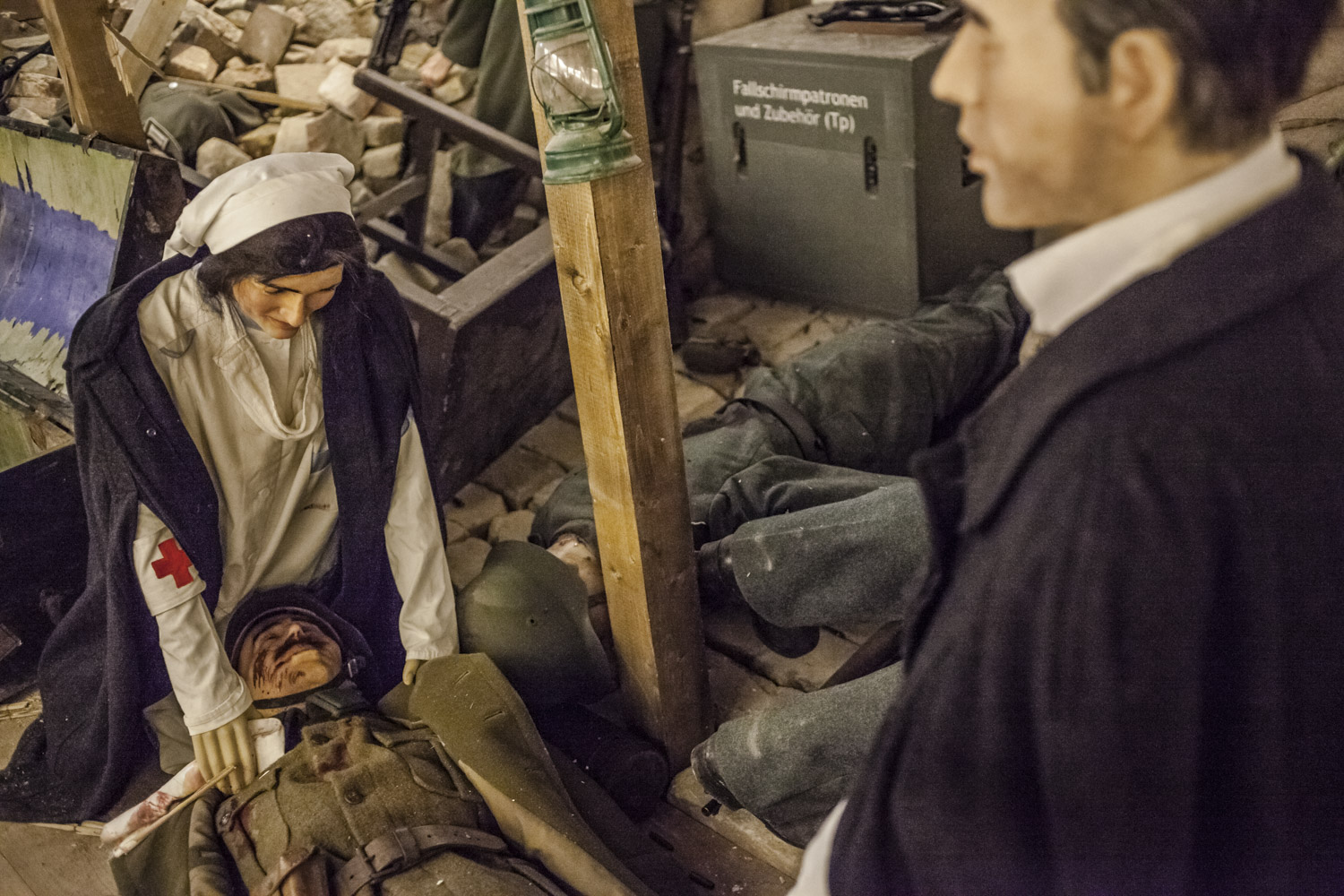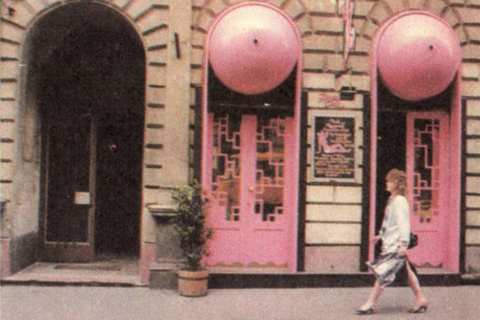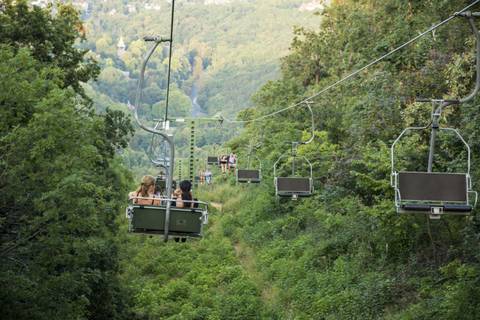War-wounded patients lie side by side amid dim lights inside recreated hospital wards, where bunk beds and stretchers are packed with life-sized wax figures of bleeding soldiers and civilians who suffered severe injuries during violent fights. These disturbing scenes are found in the Hospital in the Rock, deep beneath Buda’s Castle District – and visitors to this underground landmark are not descending into a mere reproduction of a historic refuge, but the very stone-carved chambers where Hungarians took shelter amid two of Budapest’s most tragic episodes: World War II and the 1956 Revolution.
Strolling around Buda’s picturesque Castle District, it is easy to become lost in the purely uplifting experience of admiring the area’s beautiful landmarks like Matthias Church and Fishermen’s Bastion – however, just a short stroll away from these magnificent monuments, we find the entryway to an entirely different world hidden underneath the cobblestoned streets, where profound settings of historic pain and sorrow fill a labyrinthine series of naturally chilled chambers. This is the Hospital in the Rock, a once-secret subterranean complex that was first built as an emergency facility during World War II, before again welcoming the wounded amid Hungary’s 1956 Revolution, and then being converted into a clandestine nuclear bunker that stood waiting for the final countdown that never came throughout the remainder of the Cold War.
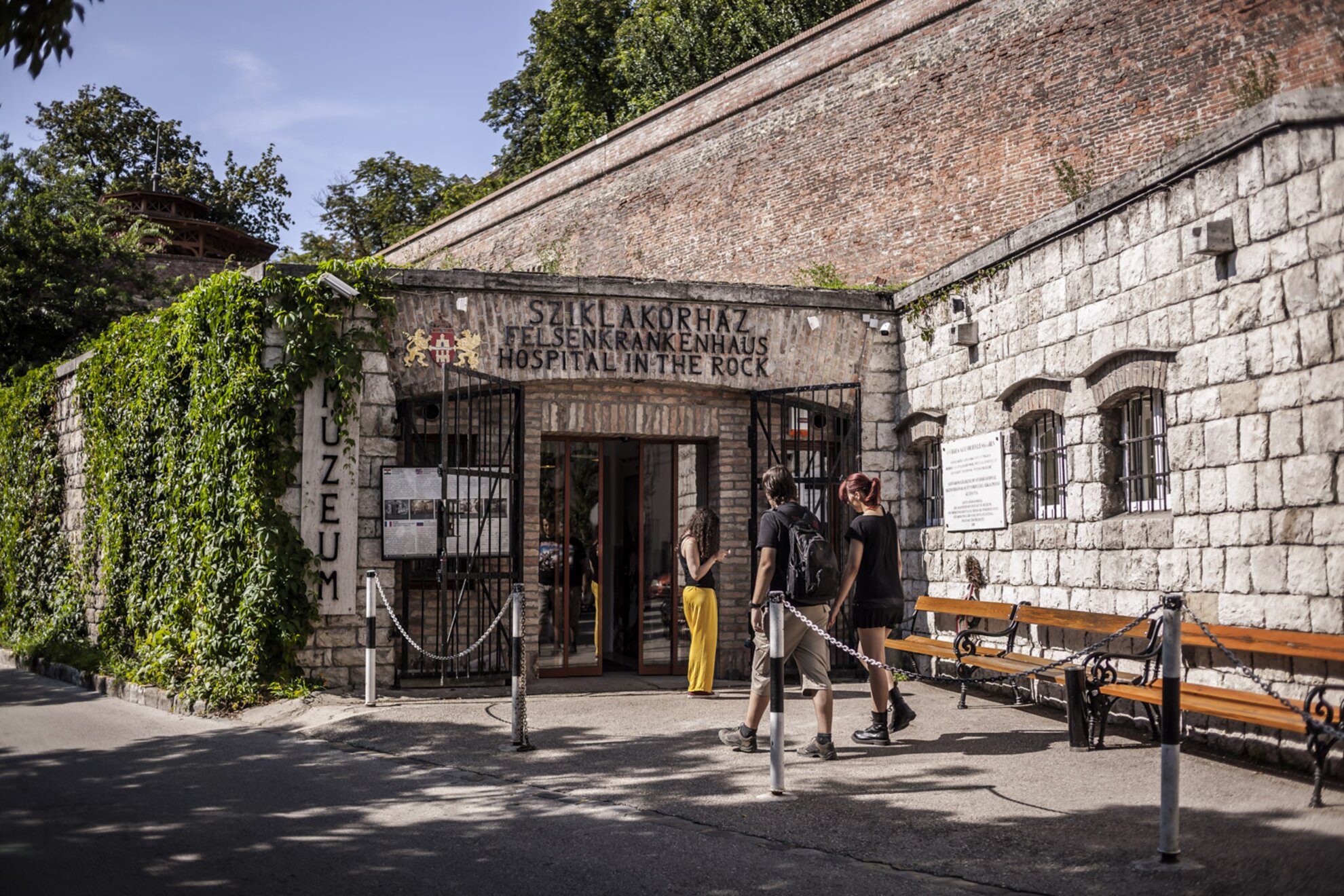
Establishment for World War IIThe construction of this subterranean hospital was greatly aided by the naturally created caverns that are found below the Castle District, carved out over eons by the thermal waters that fill Budapest’s baths. Through centuries of Hungarian history, these Castle Hill caves served as wine cellars, food-storage spaces, and dungeons, but the idea to use them for a protected first-aid center was first originated in 1935, and the hospital construction works did not begin until the outbreak of World War II in 1939. The underground medical facility opened in February 1944, when the city’s bombed-out medical facilities were no longer able to provide proper treatment for the soldiers and civilians injured during air raids.
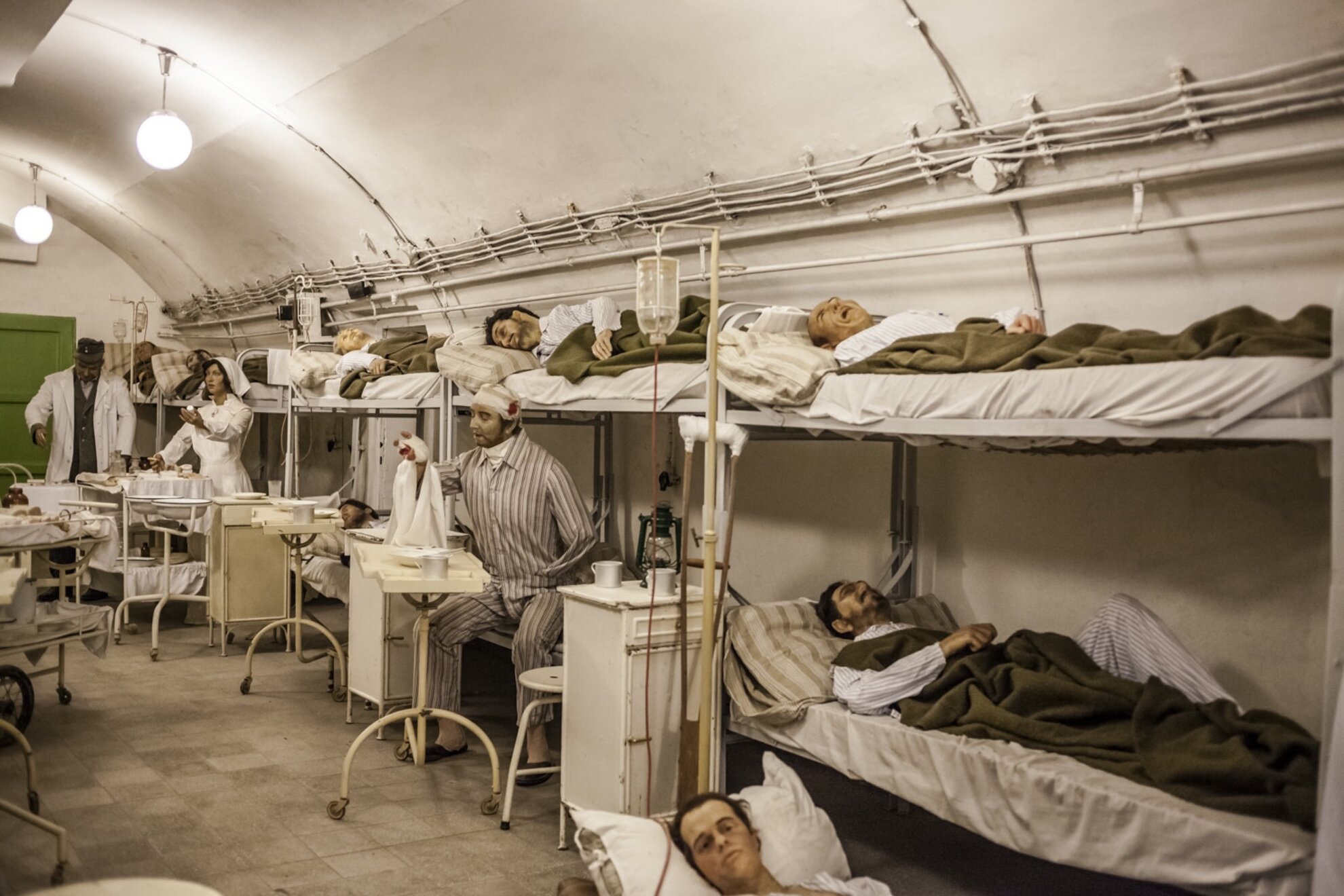
Throughout the subsequent Siege of Budapest by invading Soviet forces, doctors and nurses were assigned to serve here from Budapest’s Szent János Hospital, aided by some noble-born women who volunteered to provide support to the limited staff, including Countess Ilona Andrássy and Countess Ilona Széchényi. During the worst of WWII’s ravages in Budapest, the Hospital in the Rock provided shelter for one of the city’s most peaceful heroes of the war, Friedrich Born, a Swiss representative of the International Committee of the Red Cross. In addition to establishing safe houses for children across Budapest that saved an estimated 15,000 lives, Born arranged that the subterranean hospital would receive protected status that prevented Nazi or Red Army violence within this space.

By the end of the siege, due to substantial destruction citywide, this was the only hospital that could operate with proper medical facilities, including the city’s last functioning X-ray machine.
With the conclusion of World War II in Europe, as Hungary’s Soviet-dominated government began reinstating hospitals across Budapest, services were suspended at the Hospital in the Rock, and in the following years, this subterranean setting served as a vaccine-production center, before it was declared to be a top-secret establishment in the early 1950s.
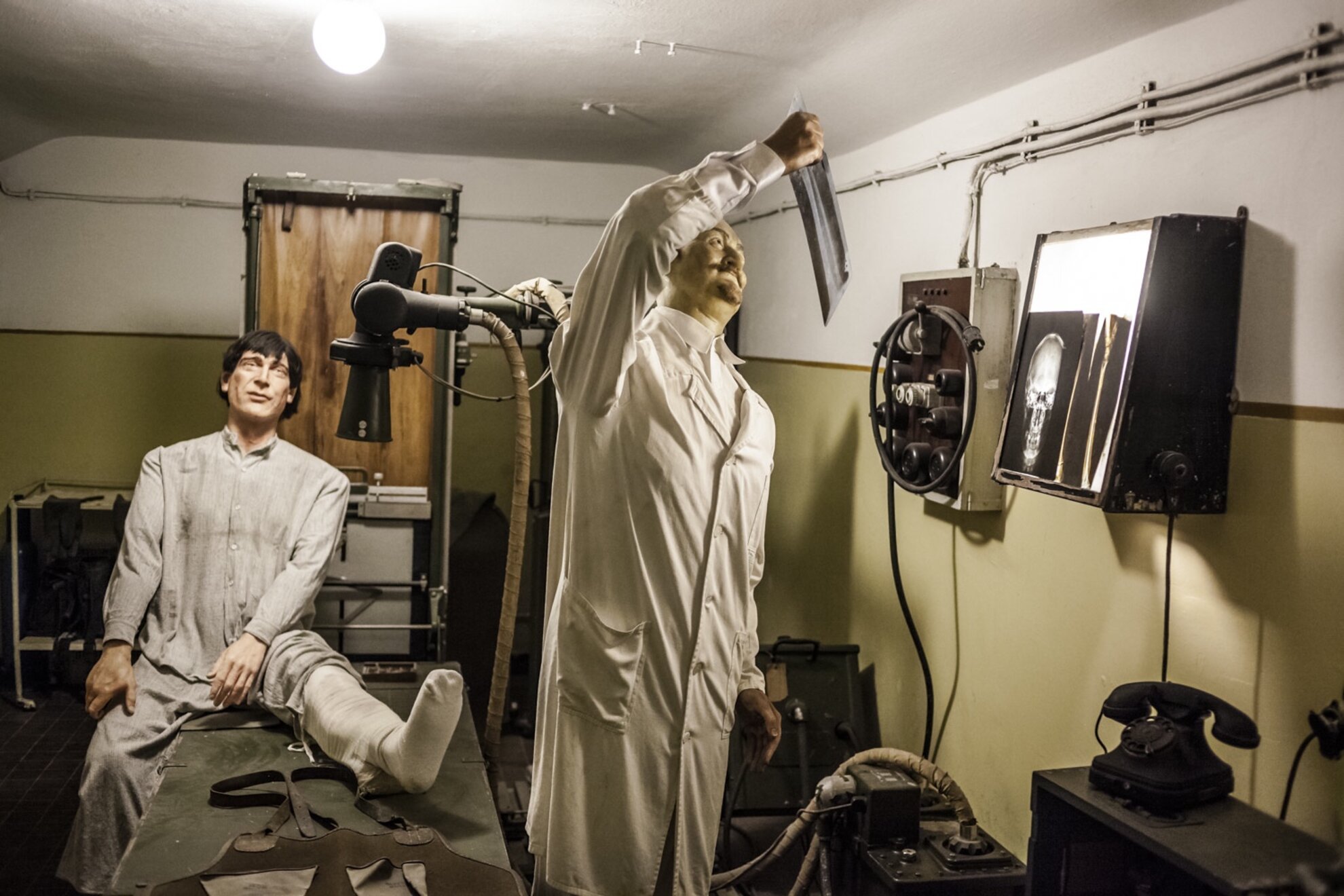
Reopening during the 1956 RevolutionHowever, Budapest locals who lived through WWII never forgot about the Hospital in the Rock, and when Hungary’s 1956 Revolution broke out, the medical labyrinth was reopened as an emergency center on October 25th – the day after the Magyar freedom fighters first rose up against the oppressing Soviet forces. During the tumultuous weeks that followed, the hospital operated continuously to treat wounded revolutionaries and innocent Hungarian civilians caught in the crossfire. Shortly after the revolution was quashed by the Red Army in early November, the hospital closed its doors for the second time.
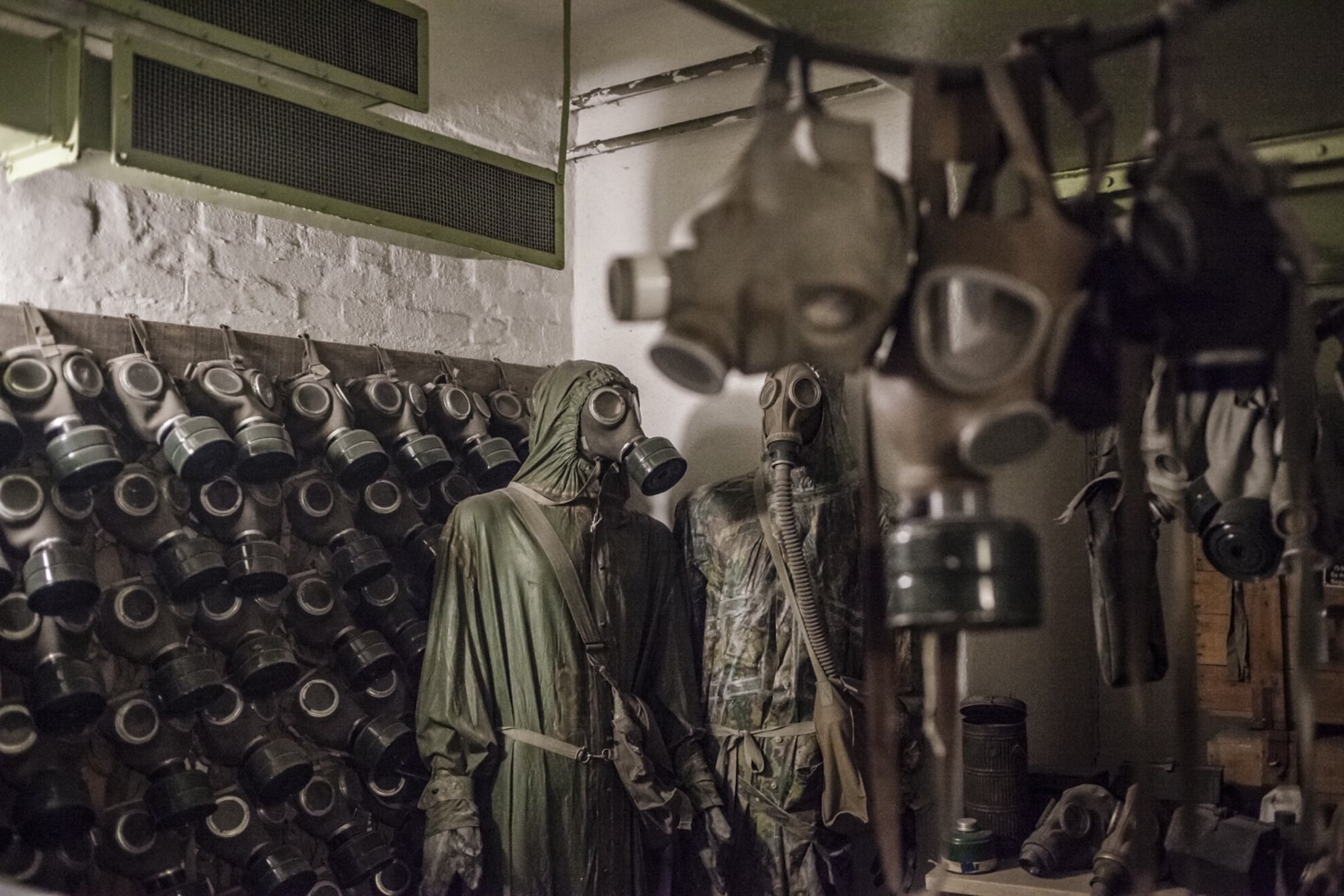
However, the history of the Hospital in the Rock was not over yet – soon after the Soviet-backed Hungarian government regained control, additional works were carried out inside the cavernous cave system to convert it into a nuclear bunker, which was continuously maintained and provided with survival supplies throughout the following decades of the Cold War in case of a doomsday attack. During the 1960s this facility was once again declared as a top-secret establishment, with its confidential status only lifted in 2002.
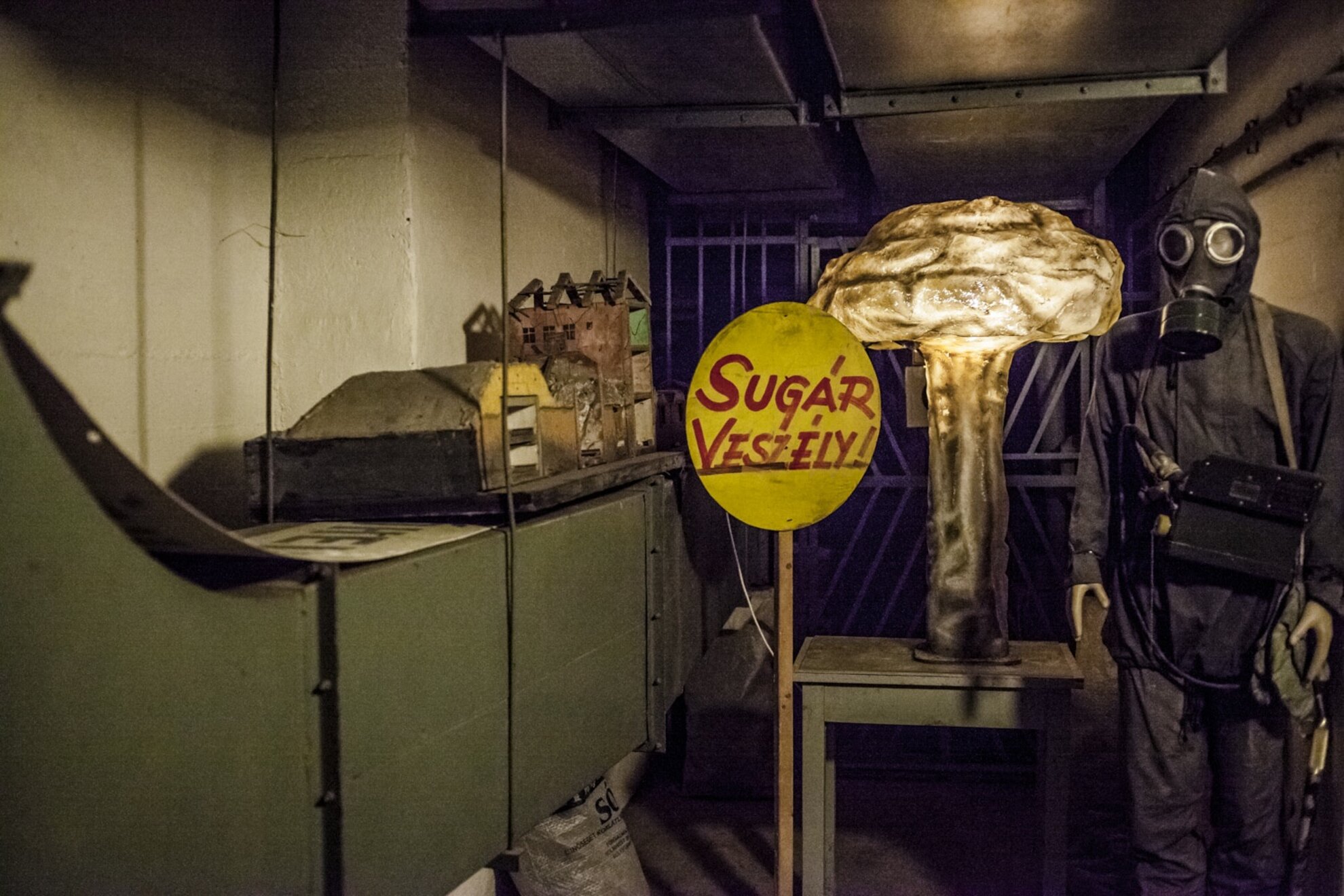
The modern-day museumFor a few years, the underground chambers were almost completely forgotten, with its machinery and supplies gathering dust in the darkness beneath Castle Hill – but in 2008, the Hospital in the Rock Museum opened here as an exhibition space to commemorate this unique site’s role during some of Budapest’s most turbulent times. Now this powerful underground display is one of Budapest’s most popular tourist attractions, boasting nearly 200 wax figures and the hospital’s original medical equipment and furnishings from decades ago.
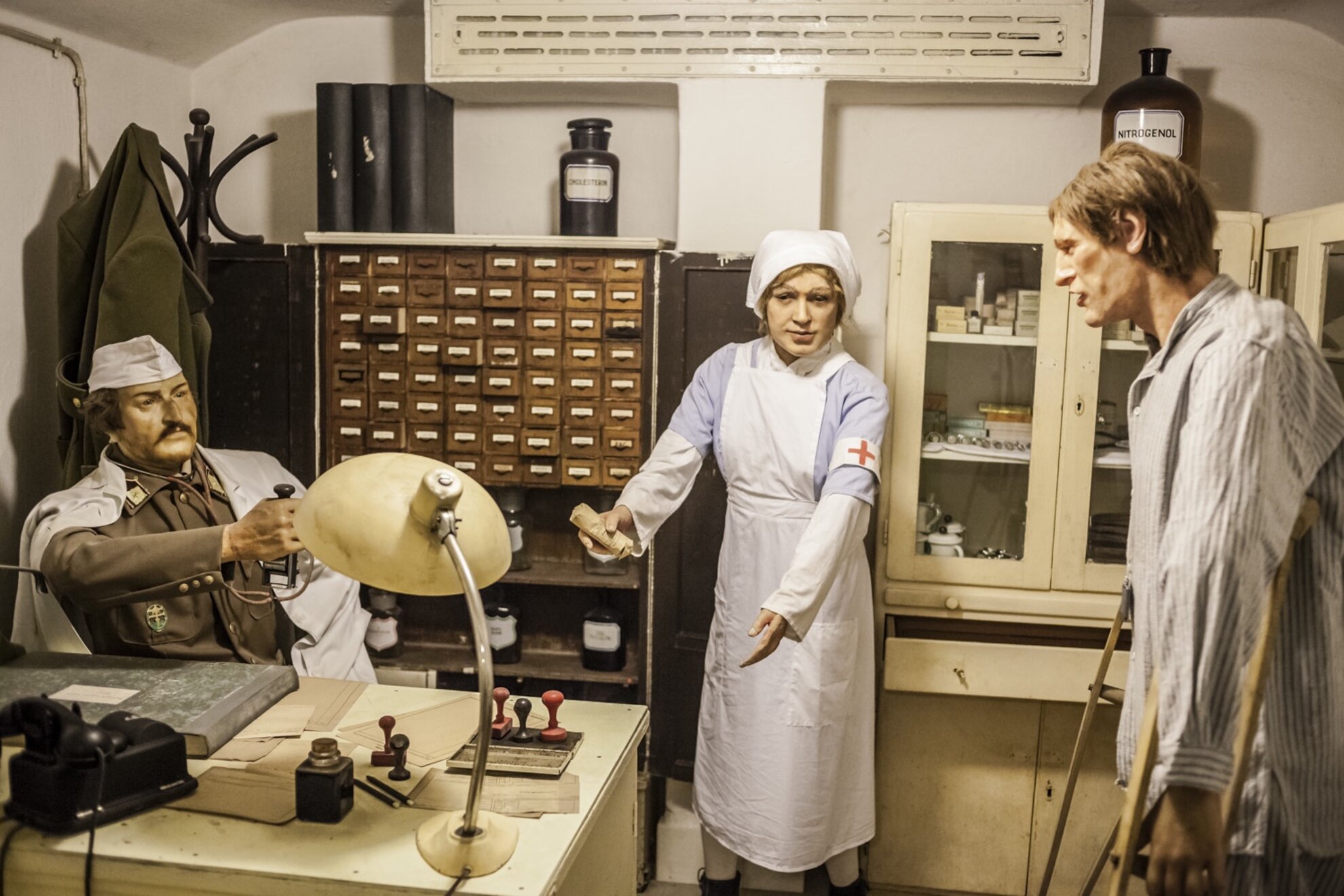
When visitors enter here from Lovas Road’s mildly winding path, they embark on a time-transcending journey beginning with an underground descent starting directly from the museum’s gift-shop area. As we continue down along a dimly lit corridor, we spot an oversized inscription mounted on the wall in the French language, declaring that this establishment was once operating under the protection of the International Committee of the Red Cross, as arranged by Friedrich Born during WWII.

As we crisscross the labyrinthine spaces decades after the wars concluded, we are profoundly touched by the lifelike displays that evocatively encapsulate the dreadful atmosphere that these walls once contained, painting a vivid picture of the tragic events that went down during the battles. We peek into the hospital’s well-furnished chambers, including the patient admission room, showcasing soldiers sitting side-by-side, and we notice that one of them is garbed in a Hungarian military uniform, while the other one wears a garment of the Third Reich. Along the way, we pass the hospital’s unpretentious kitchen, before walking by a lengthy system of cupboards that still stores authentic medical tools used here during wartime, including a collection of syringes, antiquated stethoscopes, discolored bandages, and a wide range of surgical instruments, alongside numerous antique medical devices.
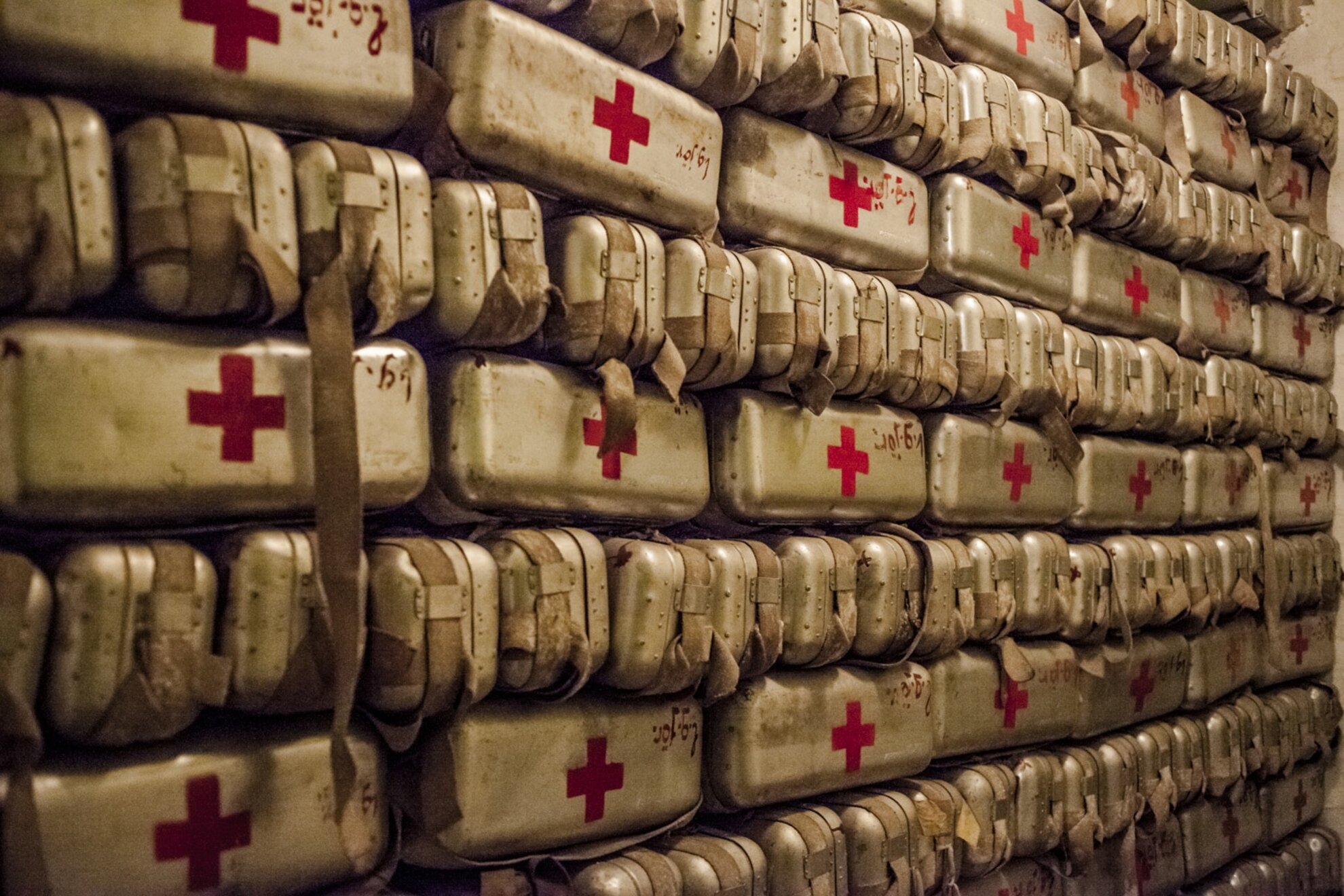
Further inside the hospital, we catch glimpses of three congested wards with bunk beds and stretchers bearing a massive amount of patients, and this almost-surreal scene certainly induces a gloomy vibe. We learn that the hospital was constructed to shelter 60 patients at a time, but during World War II this number rapidly soared above 600, when soldiers were crowded together with civilians throughout the rooms and hallways. Due to the excessive amount of patients here, the ordinary temperature of 15°C throughout this underground institution oftentimes soared above 30°C, escalating the risk of infections.In an increasingly astonished state of mind, we walk by a spacious operating room, where a team of wax-figure doctors is fighting for the lives of two bleeding patients injured during the attacks, and this bizarre scene suggests just how hectic life was down here during battles. Alongside all of the fully equipped medical facilities, this 2,370-square-meter complex also houses a massive engine room that generated the hospital’s electricity supply, plus a separate space designated to hold a vast water-distribution system, through which the hospital’s own spring water was gathered and purified – these features indicate a thorough planning procedure that ensured that a state-of-the-art hospital could continually operate during the war.
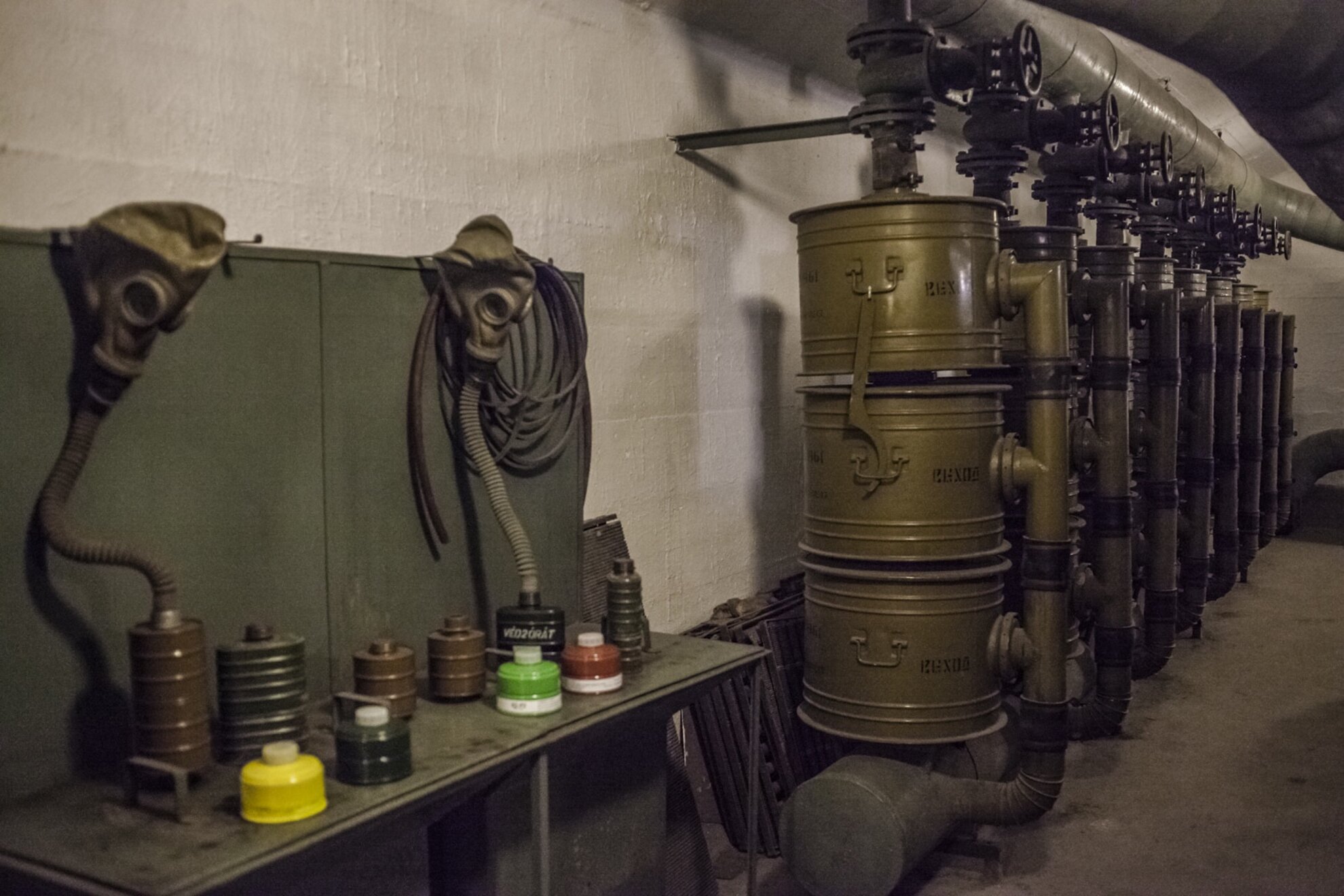
Throughout our guided tour down here – particularly in the parts that showcase the Hospital in the Rock’s role as a nuclear bunker – we see alarming signs stating that we are about to enter areas exposed to radiation, but these historic placards are now just part of the installation, and there is actually nothing that would threaten visitors’ safety anywhere in the museum’s halls. Our thorough observation of this meticulously planned complex is only interrupted by the infiltrating sound effects of bomb impacts and sirens that produce hair-raising sensations of what it must have been like here while battles occurred overhead.New exhibitsNow, alongside the lifelike recreations of medical settings, two recently installed permanent exhibits welcome visitors, both aiming to raise awareness of the brutality of war. Found in a secluded area, the “Siege of Budapest” area is an interactive installation that demonstrates scenes from Hungary’s capital during when the Soviet troops encircled the entire city at the end of 1944 and the beginning of 1945. What we see here is a moment of the city’s increasingly despairing situation represented by numerous wax sculptures, including a soldier pointing his weapon at the enemy from behind a semi-destructed wall, as bleeding warriors spread out around the rubble, and a medical emergency staff risks their lives to provide first-aid service amidst the deadly war zone.
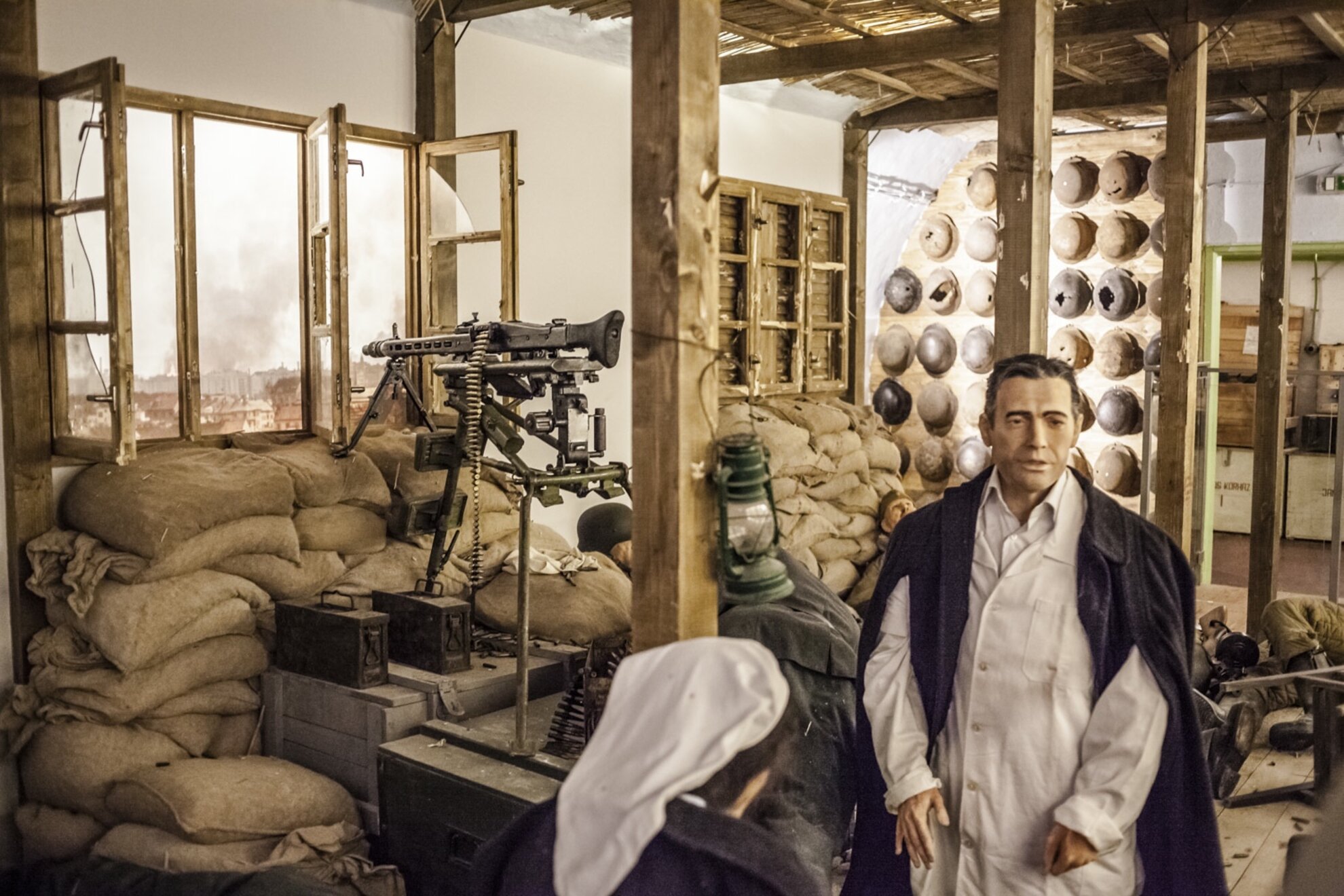
This stirring scene is enveloped by oversized photos that portray the crumbling city during the siege, with all of these moving images lit up from behind to emphasize the violence and the horrific aftermath of the fights. Behind a glass cover installed on the wall near the room’s entrance, we discover a collection of antiquated military ID tags from the time of World War II, imparting a deeper personal touch to the display, while left from the entrance we notice several helmets pierced by bullet holes.However, the second new exhibit – “Now, I became Death, the Destroyers of the World” – departs from Budapest to instead present gigantic images demonstrating Hiroshima’s wiped-out landscape following its 1945 nuclear bombing. Here, anyone who peeks behind the gargantuan pictures through peepholes cut into the upper part of the photos faces a painful sight: an assortment of hidden portraits of Hiroshima victims, clearly demonstrating the damage that nuclear weapons can do to the human body. As the last stop of the exhibit, we are routed through a narrow corridor that is flanked by drawings made by nuclear-attack survivors, who attempted to recuperate from their tragic circumstances through art.At the end of the tour, as we ascend back to present-day reality and first catch a glimpse of natural light when approaching the museum gift shop, we know that even though we are about to leave this place behind, visiting the Castle District will always fill us with mixed emotions, now that we learned the secrets that lie here underground; we will never forget how human benevolence persisted through Budapest’s worst days of devastation.

The museum can be visited throughout the year from Monday to Sunday, with guided tours beginning on the hour between 10am and 8pm, available in the English and Hungarian languages. During the summer months, on Saturdays and Sundays, English-language guided tours are organized more frequently, on every half hour between 12pm and 5pm. However, on October 23rd, 2016 – the 60th anniversary of the outbreak of Hungary’s 1956 Revolution – all tours have already been fully booked due to popular demand.
